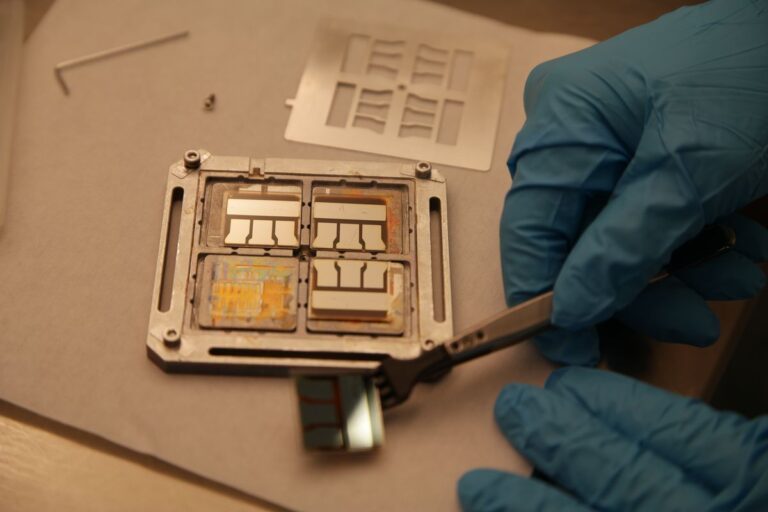Result description
The initial objective was to achieve a 15% stable lab scale cell without lead (Pb), or at the least with the lowest possible amount of lead. However, in the course of the project, it appeared clearly that no viable lead free exist for the moment and that in the same, the lead present in the films, if properly managed, e.g. with recycling, would not impede technology development. (read more here[link to LCA]). For this reason, researchers chose not to pursue the mission to develop a 100% lead-free single-junction cell, but instead focused on double perovskites based on M+1M’3+ mixed valence cations where M and M’ are for example Ag+ and Bi3+. The result was an optimised 1.25 eV mixed Pb/Sn perovskite with an active area of 1 cm2. During the course of work on the low-lead single-junction cell, most of the optimisation was performed on smaller device area (~0.1 cm2) and reported in a peer-reviewed scientific publication [link]. The best small area devices of this kind achieved a steady-state PCE of 17.6%. The best performance achieved for the 1 cm2 device was a scanned efficiency of 14.5% – with a steady-state PCE of 13.2% measured over 300 seconds in air with no encapsulation.
Summary:
- Performance testing of an optimised 1.25 eV mixed Pb/Sn perovskite with an active area of 1 cm2
- 17.6% steady-state power conversion efficiency of best small area devices (~0.1 cm2)
- 14.5% scanned efficiency achieved for the 1 cm2 device – with a steady-state power conversion efficiency (PCE) of 13.2% measured over 300 seconds in air with no encapsulation.
Addressing target audiences and expressing needs
- Collaboration
- Research and Technology Organisations
- Academia/ Universities
Result submitted to Horizon Results Platform by THE CHANCELLOR, MASTERS AND SCHOLARS OF THE UNIVERSITY OF OXFORD

